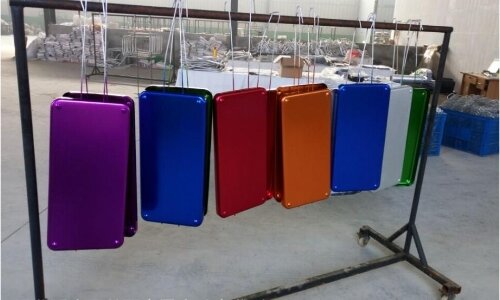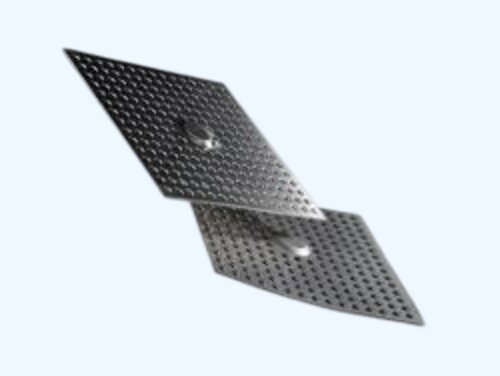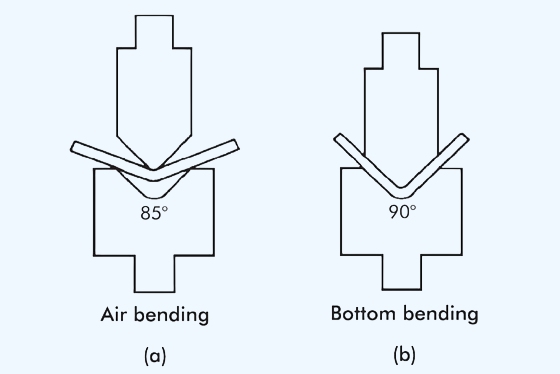アルミニウム部品は、その用途によってさまざまなニーズに直面する。滑らかで装飾的な表面を必要とするものもあれば、耐摩耗性や耐腐食性を必要とするものもあります。アルマイト処理は、この両方の目標を満たすのに役立ちます。表面を強化し、寿命を延ばし、外観を向上させます。
多くのエンジニアやデザイナーは、どちらのタイプを選ぶべきか悩むことが多い:タイプIIとタイプIIIのアルマイト処理?どちらもアルミニウムを保護しますが、その効果は異なります。この記事では、両者の違い、それぞれの特徴、プロジェクトに最適なオプションの選び方について説明します。

アルマイト処理とは?
陽極酸化処理 はアルミニウムの表面を強力な保護酸化物層に変える。この層は、金属上の自然な酸化皮膜を厚くする電気化学的プロセスによって形成されます。耐食性を向上させ、耐久性を高め、着色やシーリングのためのより良い表面を提供します。
このプロセスは、アルミニウム部品を酸浴(通常は硫酸)に入れることから始まる。アルミニウムを陽極として、溶液中に電流が流れる。電解液中の酸素がアルミニウム表面と反応し、緻密な酸化層を形成します。この層は金属と強固に結合し、塗装やメッキのように剥がれたりはがれたりすることはありません。
この酸化皮膜の厚さは、プロセスと性能の必要性に依存する。薄い層は外観と腐食防止に重点を置く。厚い層は硬度と耐摩耗性を高めます。アルマイトの表面は染料を保持することもでき、装飾的な色が長持ちします。
タイプIIおよびタイプIII陽極酸化の概要
どちらのタイプのアルマイト処理もアルミニウムを保護しますが、その目的は異なります。タイプIIとタイプIIIのコーティングは、製造工程、外観、性能が異なります。
タイプII(従来の硫酸アルマイト処理)
タイプIIアルマイト処理は、標準アルマイト処理または装飾アルマイト処理としても知られ、硫酸を使用して中程度の厚さの酸化皮膜を形成します。皮膜は通常、0.00007~0.001インチ(1.8~25μm)である。滑らかできれいな表面となり、耐食性と外観が向上します。
タイプIIアルマイトの表面は多孔質で、染料を効果的に吸収することができる。部品は黒、赤、青、透明などの色合いに着色することができる。着色後、表面をシールして色を保護し、酸化を防ぎます。このタイプのアルマイトは、家電製品、パネル、フレームなど、保護とスタイリッシュな仕上げの両方を必要とする部品によく使用されます。
タイプIIアルマイト処理は、部品が激しい摩耗にさらされない屋内または軽度の屋外使用に最適です。優れた保護性能と装飾的な外観を両立させ、費用対効果に優れています。
タイプIII(ハードコートアルマイト処理)
ハードコートアルマイトとしても知られるIII型アルマイト処理酸化皮膜の厚さは0.0005~0.006インチ(13~150μm)である。コーティングは通常、0.0005~0.006インチ(13~150μm)の範囲である。より高い電圧と低温の条件下で形成されるため、より複雑でコンパクトな構造となる。
その結果、表面は耐摩耗性に優れ、セラミックに匹敵する硬度を達成することができます。タイプIII陽極酸化は、過酷な環境において優れた性能を発揮し、摩耗、腐食、高温から保護します。長期耐久性が重要な航空宇宙、軍事、重機産業で広く使用されています。
タイプIIIのコーティングは硬く厚いが、装飾性は低い。色が濃くなることが多く、部品の寸法がわずかに変わることがある。エンジニアは、精密な設計においてこの点を考慮する必要がある。それでも、摩擦や衝撃、過酷な条件にさらされる部品にはタイプIIIが適している。

タイプIIとタイプIIIアルマイトの主な違い
技術的な違いを知ることで、各プロセスを最適な用途に合わせることができます。以下では、厚み、色、コスト、プロテクションの比較について説明する。
コーティングの厚さと硬さ
タイプII陽極酸化は、通常1.8~25μmの厚さの、より薄い酸化皮膜を形成する。良好な耐食性と滑らかな仕上げが得られるが、激しい磨耗や損傷には適していない。タイプIIIの陽極酸化処理では、厚さ13~150μmの厚い酸化皮膜が形成される。その緻密な構造により、より複雑で耐摩耗性に優れている。
タイプIIIのコーティングは、焼入れ鋼に匹敵する60~70ロックウェルCの硬度を達成することができる。そのため、頻繁に動いたり、摩擦や衝撃を受ける部品に最適です。タイプⅡのコーティングは、強度よりも見た目と適度な保護に重点を置いています。
色と染料の適合性
II型アルマイトは染料を吸収しやすいため、鮮やかで均一な色が得られます。その多孔質な表面は、顔料を深く浸透させてからシーリングします。そのため、装飾的な仕上げを必要とする一般消費者や建築部品に人気があります。
しかし、タイプIIIのアルマイトは色をうまく取り込むことができない。その緻密な層は染料の吸収を制限するため、色は暗くなったりくすんだりする傾向がある。ほとんどのハードコートアルマイト部品は、ナチュラルグレーまたはダークブロンズの色合いにとどまる。染色された場合でも、タイプIIに比べると色の均一性は劣ります。
温度とプロセス条件
どちらのプロセスも硫酸を使用するが、条件は異なる。II型は中程度の電圧と20℃~25℃の温度で作動する。III型は高電圧、低温(通常40°F(4.4℃)以下)で運転される。
より低温の環境では反応が遅くなり、より緻密な酸化層が形成される。電圧が高いほど表面の酸化が深まり、硬度が増す。タイプIIIのコーティングがより強く耐久性に優れているのは、このような厳しい条件によるものです。
コストと生産時間
タイプIII陽極酸化は、コストが高く、製造に時間がかかる。より高い電圧、より低い温度、より長い処理時間を必要とするため、より多くのエネルギーを消費し、より早く装置を消耗する。また、皮膜が厚くなるため、製造にも時間がかかる。
タイプIIアルマイト処理は、より速く、より手頃な価格です。外観と腐食保護が主な目的の部品には、こちらの方が適しています。タイプIIIは、部品が摩耗や摩擦、過酷な条件に対応する必要があり、追加コストが正当化される場合に使用されます。
耐食性と耐摩耗性
どちらのタイプのアルマイト処理もアルミニウムを腐食から保護しますが、応力に対する強度は異なります。タイプIIは、屋内および軽度の屋外条件下で優れた性能を発揮します。タイプIIIは、海洋、工業、高摩擦用途などの過酷な環境において、格段に優れた保護性能を発揮します。
タイプIIIの厚い酸化被膜は、塩分、摩耗、衝撃に対して硬いシールドのような働きをする。これは、部品が長期間にわたってその形状と寸法を維持するのに役立ちます。タイプIIは依然として耐食性に優れていますが、常に擦れたり動いたりすると摩耗が早くなります。
| 特集 | タイプII陽極酸化 | タイプIIIアルマイト(ハードコート) |
|---|---|---|
| 保護層の厚さ | 0.00007~0.001インチ(1.8~25μm) | 0.0005~0.006インチ(13~150μm) |
| 硬度 | 中程度、軽い摩耗は良好 | 非常に高い;60~70ロックウェルC(焼き入れ鋼に似ている) |
| 表面の外観 | 滑らか、明るい、装飾的 | くすんだダークグレーまたはブロンズ色、装飾性は低い |
| カラー/染色能力 | 優れた染料吸収性、鮮やかな色 | 染料の吸収が限定的。 |
| 耐腐食性 | 屋内または軽度の屋外使用に適している | 海洋、産業、過酷な環境に最適 |
| 耐摩耗性 | 中程度;高摩擦用途には向かない | 優れた耐摩耗性、耐衝撃性、耐摩擦性 |
| プロセス条件 | 中程度の電圧;20~25°C(68~77°F) | 高電圧;40°F(4.4°C)以下 |
| コストと生産時間 | 低コストと迅速な生産 | 高いコストと長い処理時間 |
| 寸法変更 | サイズへの影響は最小限 | 厚い酸化物によるわずかな寸法成長 |
| 代表的なアプリケーション | 家電製品、パネル、フレーム、室内備品 | 航空宇宙、防衛、油圧部品、工具、重機械 |
板金部品における代表的な用途
タイプIIとタイプIIIのアルマイト処理は、板金加工においてそれぞれ異なる目的を果たします。適切な選択は、部品の使用方法、外観、耐摩耗性によって決まります。
タイプIIをいつ使うか?
タイプIIアルマイト処理は、防錆と見た目の美しさを必要とする部品に最適です。外観や色が機能と同様に重要な場合によく使用されます。より薄い皮膜は、安定した部品寸法を維持しながら適切な保護を提供し、これは特にタイトフィッティングのアセンブリに有益です。
代表的な用途は、電子機器のハウジングなどである、 コントロールパネルディスプレイ・フレーム、照明器具の筐体など。また、滑らかな仕上げと一貫した色調が不可欠な建築用トリムや内装備品にもよく使われる。タイプIIは耐久性と外観のバランスが取れており、軽度の磨耗に直面する業務用製品に最適です。
タイプIIIの使用時期
タイプIIIアルマイト処理は、過酷な条件にさらされたり、常に使用される部品のために設計されています。その厚く硬い皮膜は、摩擦や衝撃、過酷な環境にも耐えます。エンジニアは、長期間の使用後も部品の強度と精度を維持する必要がある場合に、このアルマイト処理を選択します。
航空宇宙用ブラケット、軍用ハウジング、油圧継手、工業用機械部品によく使用されています。また、摩耗やカジリに抵抗しなければならない工具、ギア、摺動部品にも使用されています。このような場合、外観よりも機能と耐久性が優先され、Type IIIは要求の厳しい作業に必要な保護を提供します。
プロジェクトにおけるタイプIIとタイプIIIの選択
適切なアルマイト処理タイプの選択は、部品の使用方法、さらされる環境、およびプロジェクトの予算によって決まります。エンジニアや設計者は、外観、耐食性、表面強度のどれが最も重要かを判断する必要があります。
タイプIIアルマイトは、外観と耐光性が主な目的である場合に理想的です。価格も手頃で、着色も簡単、加工も短時間で済みます。そのため、激しい摩耗や過酷な条件を経験しない装飾部品、消費者部品、屋内部品に最適です。
タイプIIIアルマイトは、常に使用される部品や過酷な環境にさらされる部品に適した選択です。その厚く硬い皮膜は、摩擦、熱、化学薬品に耐えます。コストは高く、製造に時間がかかりますが、重要な用途に永続的な性能と信頼性を提供します。
アルミ部品の図面を今すぐアップロード までご連絡ください。当社のエンジニアリングチームがお客様の設計を検討し、プロジェクトに最適なアルマイト処理タイプを選択するお手伝いをいたします。
よくあるご質問
タイプIIIのアルマイトは染色できますか?
はい。III型アルマイトの緻密な酸化皮膜は、染料の浸透をより難しくしている。このため、色は通常、タイプIIよりも暗く、明るくないように見えます。ほとんどのタイプIIIの部品は、耐摩耗性を維持するため、自然なグレーまたはブロンズ仕上げのままです。
アルマイト処理は部品の寸法に影響しますか?
タイプIIとタイプIIIのアルマイト処理は、酸化皮膜が内側と外側の両方に成長するため、部品のサイズがわずかに変化します。タイプIIは厚みをほとんど追加しませんが、タイプIIIは層の深さによって数ミクロン追加することができます。
耐食性に優れたアルマイト処理は?
タイプIIIアルマイト処理は、より厚く緻密な皮膜を形成するため、より優れた耐食性を発揮します。湿度の高い環境、海洋環境、または工業環境で優れた性能を発揮します。タイプIIも腐食を防ぎますが、屋内や屋外の穏やかな環境に最適です。
タイプⅡのアルマイト加工部品は屋外で使用できますか?
はい、できます。タイプⅡのアルマイト加工部品は、着色後に十分なシーリングが施されていれば、屋外でも問題なく使用できます。シーリングは表面の気孔を塞ぎ、湿気や日光に対する耐性を向上させます。しかし、長期間の屋外や過酷な環境では、タイプIIIのアルマイト加工がより信頼できます。
タイプIIIのアルマイトは装飾仕上げに適していますか?
そうではない。タイプIIIは見た目ではなく、強度と耐摩耗性に重点を置いている。表面が緻密なため、染料を均一に吸収することが難しく、色が濃く見えたり、不均一に見えたりすることが多い。明るい色や均一な色が必要な場合は、IIタイプのアルマイト加工が適しています。

ケビン・リー
レーザー切断、曲げ加工、溶接、表面処理技術を専門とし、板金加工において10年以上の実務経験があります。シェンゲンのテクニカルディレクターとして、複雑な製造上の課題を解決し、各プロジェクトにおける革新と品質の向上に尽力しています。




